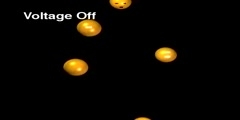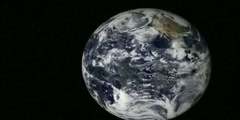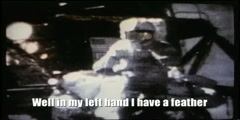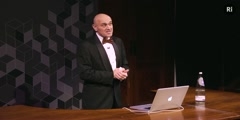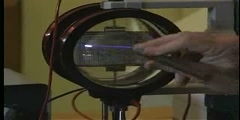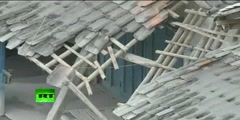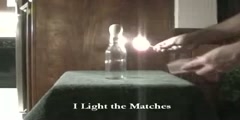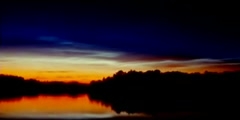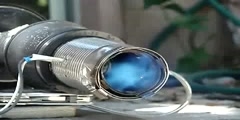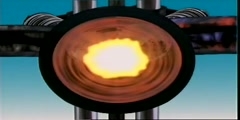Lec 11 - Clouds and Precipitation (cloud chamber experiment)
"Lec 11 - Clouds and Precipitation (cloud chamber experiment)" The Atmosphere, the Ocean and Environmental Change (GG 140) Scattered visible light and microwave radar can used used to detect clouds and precipitation. Cloud formation in rising air can be simulated in the classroom by suddenly dropping the pressure in a glass chamber. The small cloud droplets formed in this way fall too slowly to ever reach the earth. There are two main mechanisms by which precipitation is generated from clouds. Collision coalescence occurs mainly over tropical oceans whereas the ice phase mechanism is more common and also more relevant to the practice of cloud seeding. 00:00 - Chapter 1. Interactions between Visible Light and the Atmosphere 07:15 - Chapter 2. Using Radar to Detect Precipitation 09:13 - Chapter 3. Cloud Formation Experiment 19:06 - Chapter 4. Collision Coalescence Mechanism of Raindrop Formation 21:36 - Chapter 5. Ice Phase Mechanism of Raindrop Formation 26:17 - Chapter 6. Mechanism of Precipitation Formation Based on Cloud Characteristics 32:38 - Chapter 7. Cloud Seeding 39:21 - Chapter 8. Precipitation Climatology 43:05 - Chapter 9. Evaporation Complete course materials are available at the Open Yale Courses website: http://oyc.yale.edu This course was recorded in Fall 2011.
Video is embedded from external source so embedding is not available.
Video is embedded from external source so download is not available.
Channels: Environmental engineering
Tags: Lec 11 - Clouds and Precipitation (cloud chamber experiment)
Uploaded by: yaleatmoocenchng ( Send Message ) on 13-09-2012.
Duration: 49m 2s
Here is the next lecture for this course
Cloud Chamber to Observe Radioactivity
01:28 | 15649 viewsMillikan Oil Drop Experiment
01:14 | 39288 viewsPollutions Effect on Clouds
02:12 | 3606 viewsHow Do Clouds Form?
01:18 | 4071 viewsLec 6 - Physics 111: Bubble Chamber (BBC)
12:34 | 3376 viewsGravity Experiment - Feather Inside a Vac ...
04:52 | 7471 viewsChemistry Experiment With a Christmas Twist
04:00 | 4778 viewsFamous Double Slit Experiment Explained i ...
09:08 | 3697 viewsPhysics Lab Demo 7: Thompson Experiment
03:37 | 19231 viewsDouble Slit Experiment - The Strangeness ...
05:48 | 10582 viewsMerapi Eruption_ Travel chaos as volcano ...
01:42 | 4777 viewsA simple experiment to demonstrate pressu ...
02:38 | 7613 viewsNoctilucent Clouds
03:02 | 3282 viewsCombustion Chamber for a Jet Engine
00:32 | 6347 viewsCombustion Chamber
03:02 | 5057 viewsNo content is added to this lecture.
Lecture list for this course
Lec 1 - Introduction to Atmospheres
Lec 2 - Retaining an Atmosphere
Lec 4 - Vertical Structure of the atmosphere; Residence Time
Lec 5 - Earth Systems Analysis (Tank Experiment)
Lec 6 - Greenhouse Effect, Habitability
Lec 9 - Water in the Atmosphere I
Lec 10 - Water in the Atmosphere II
Lec 12 - Circulation of the Atmosphere (Exam I review)
Lec 13 - Global Climate and the Coriolis Force
Lec 14 - Coriolis Force and Storms
Lec 18 - Seasons and Climate Classification
Lec 19 - Ocean Bathymetry and Water Properties
Lec 20 - Ocean Water Density and Atmospheric Forcing
Lec 22 - Ocean Currents and Productivity
Lec 24 - Ice in the Climate System
Lec 25 - Ice and climate change
Lec 26 - Isotope Evidence for Climate Change
Lec 28 - Global Warming (continued)
Lec 29 - Global Warming (continued)
Lec 30 - Climate Sensitivity and Human Population
Lec 31 - The Two Ozone Problems


